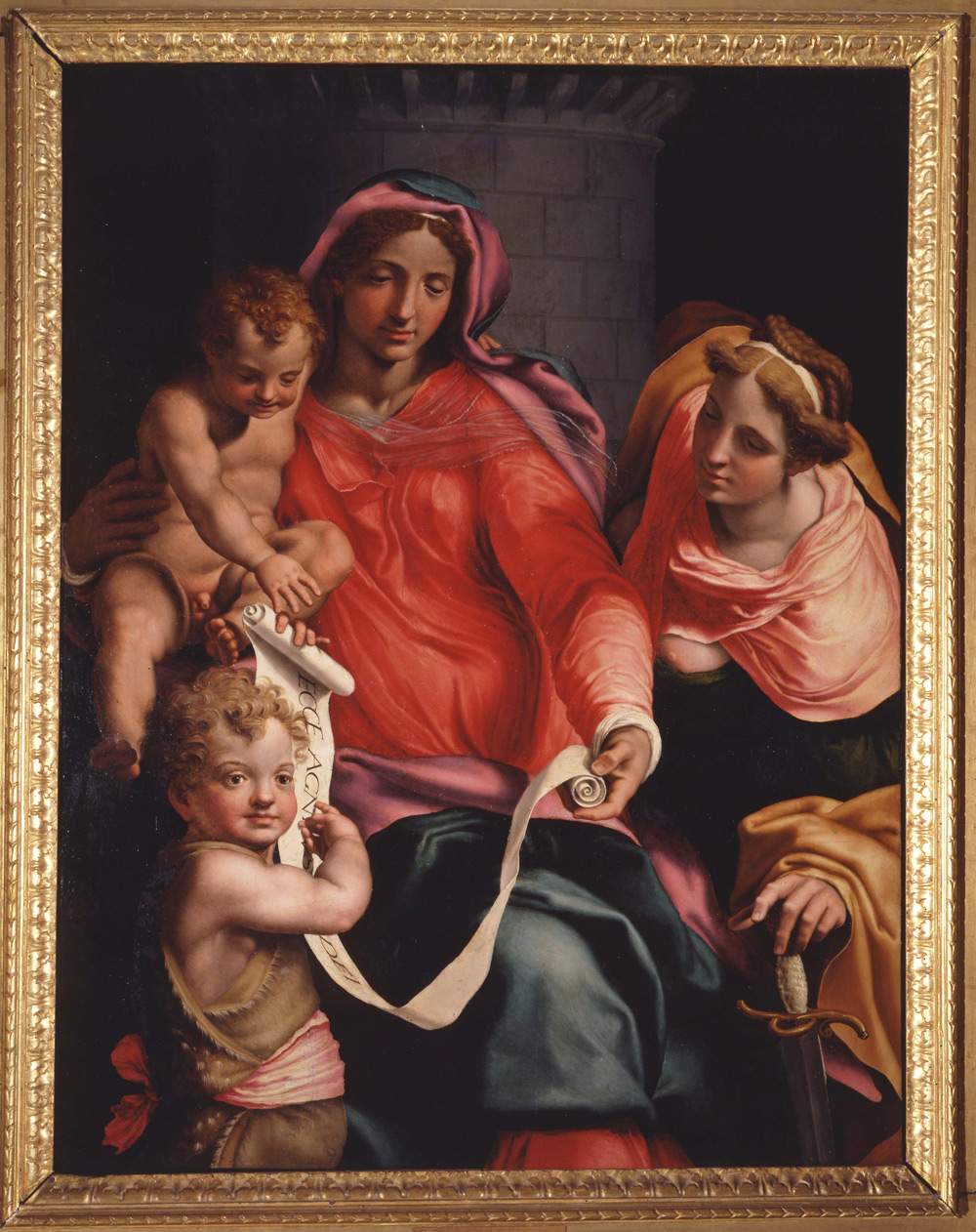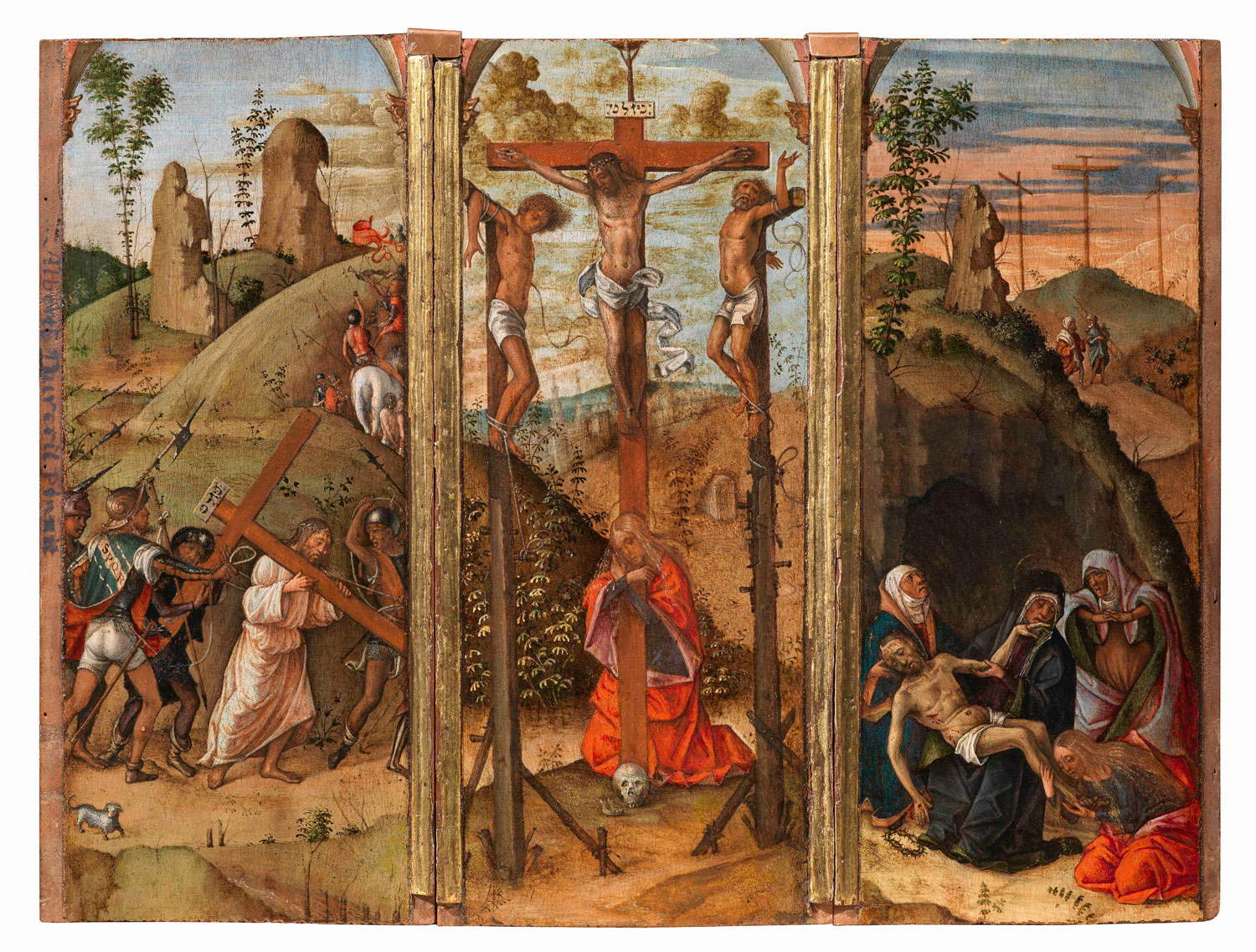The last of Finestre sull’Arte ’s three focuses on the XXXI edition of the Florence Biennale Internazionale dell’Antiquariato: the gallery we meet today is Benappi Fine Art(www.benappi.com, one of Europe’s leading antiquarians in the antique art market, with offices in Turin and London, and which participates every year in all the most important international fairs. Benappi, in this 2019 edition of the BIAF, obtained an important recognition: the Madonna and Child, St. John and St. Barbara by Daniele da Volterra (Daniele Ricciarelli; Volterra, 1509 - Rome, 1566), which Benappi brought to the fair, was in fact awarded the Pierucci Prize for Painting, given to the best painting.
At the booth we meet Enrica Roberto, Benappi’s gallery manager, who tells us about the painting, “It is a very well-known work because it has had many exhibitions and is very well published. It has always belonged to a private collection, and it is a panel that has the typical elements of Mannerism, starting with the cold tones.” The work was purchased a few days ago by the Uffizi Galleries: the Madonna thus joinsElijah in the Desert, also a work by Daniele da Volterra(and purchased by the Uffizi two years ago) and, like the Madonna brought to the BIAF, once in the collections of the Pannocchieschi d’Elci, a family of Sienese nobility.
“Daniele da Volterra’s works on movable media,” continues Enrica Roberto, "are extremely rare. This Madonna, along with the canvas by the same author depictingElijah in the desert, were the last two works by the artist that remained in private collections. So the Madonna we presented in the Biennale is a very precious object, and it is recognized as being of sublime quality: see, for example, the drapery, which is particularly pleasing, the faces, and the masculinity of the characters, typical features of Mannerism and Daniele da Volterra in particular."
But beyond theexploit of the Tuscan Mannerist’s work, for Benappi this year’s BIAF was positive. “The Biennale,” Enrica Roberto lets us know, “was quite successful: there was a very good response from the public, an important and international audience, and certainly the exhibitors gave their all and brought some of the most beautiful works I have ever seen in exhibitions, even international ones.” Among them, those in Benappi’s booth. We ask to illustrate other significant works, and Enrica Roberto shows us a small triptych with the Stories of the Passion of Christ (the going to Calvary, the crucifixion, the deposition in the tomb) assigned to Giovan Francesco Maineri (Parma, c. 1460 - c. 1506): “It was attributed by Andrea De Marchi to Maineri, and it is a valuable work because this triptych is also a very rare work. It is probably among Maineri’s earliest creations and bears some characteristics of the miniaturist Maineri. So it is a very small work in size, but also very valuable.”
We cannot help but notice that Benappi is among the exhibitors presenting a booth of those most similar to the hall of a museum: this is a typical feature of the Turin gallery, since it is also found in other fairs. And as a result, the public lingers for a long time among his works. But perhaps it is not only due to the layout. “Interest from visitors,” explains Enrica Roberto, “is something that perhaps arises spontaneously the moment you bring quality works, such as Daniele da Volterra’s, which attracts a lot of media attention: as a result, the public is led to see it. We always try to bring the best of what we can find, our particularity is that we work on objects that we think are masterpieces that can surprise.”
A quality that concerns both the historical importance of the pieces on offer and their state of preservation. But not only that: there are also quite unusual works. Enrica Roberto, for example, shows us a Bust of a Moor from 1887 by the Turin sculptor Davide Calandra (Turin, 1856 - 1915) and a small 17th-century oil on glass, depicting the Temptations of Adam and Eve and the work of Vincenzo Gesualdo, a Neapolitan painter active in the mid-17th century and about whom we still know practically nothing. “Often,” Enrica Roberta concludes, “we bring in works that might be considered a bit bizarre or otherwise different from the usual. Our gallery tries to stand out in this way as well.”
In the following photos, the works mentioned and Benappi’s booth at the XXXI edition of BIAF.
 |
| Daniele da Volterra, Madonna and Child, St. John and St. Barbara (c. 1548; oil on panel, 131.6 x 100 cm) |
 |
| Giovan Francesco Maineri, Stories of the Passion (last decade of the 15th cent.; oil on cherry wood panel, 22.5 x 31.5 cm) |
 |
| Davide Calandra, Bust of Moor (1887; terracotta, height 70 cm) |
 |
| Vincenzo Gesualdo, Temptations of Adam and Eve (1625-1650; oil on glass, 32.5 x 40 cm) |
 |
| BIAF focus 3/3, Benappi Fine Art: "public interest arises if there is quality" |
Warning: the translation into English of the original Italian article was created using automatic tools. We undertake to review all articles, but we do not guarantee the total absence of inaccuracies in the translation due to the program. You can find the original by clicking on the ITA button. If you find any mistake,please contact us.